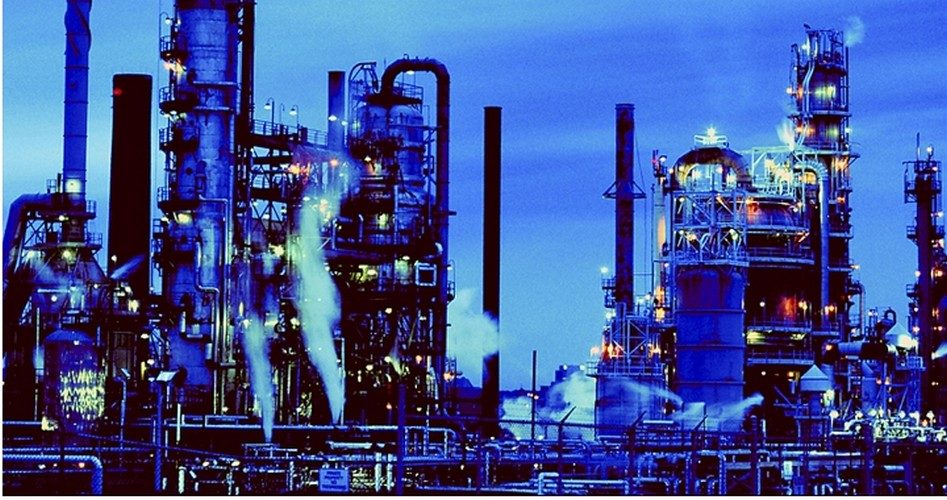
As crude oil prices continued their breathtaking drop, the CEO of Canadian Natural Resources, Canada’s largest oil company, Murray Edwards (the 14th wealthiest Canadian) was asked on Friday just how much further crude oil prices could decline. His response:
On a given day you can have market fluctuations where prices fluctuate far more than the underlying economic value of the unit. Prices could spike down to $30, $40. It got down to $35 in 2008, for a very short period of time.
On Monday crude oil prices briefly stabilized and then dropped further on Tuesday, hitting new four-year lows.
This pronouncement is at odds with an oil production estimate by the seemingly eternal oil optimist and economist Mark Perry, who rejoiced on Monday that oil production in Texas exceeded three million barrels per day (bpd) in September, making it (if it were a separate nation) the world’s seventh largest oil producer. Wrote Perry:
For oil output in Texas to increase from 2 million to more than 3 million bpd in less than two years … is undoubtedly one of the most remarkable energy success stories in US history.
Perry goes on to make a prediction that he may soon regret:
At the current pace of annual increases of more than 20%, daily Texas oil production is on track to surpass the 4 million barrel milestone by August of next year.
His fatal assumption may be in that phrase, “at the current pace of annual increases.” He may learn the lesson investors in every bull market eventually learn: Nothing ever grows to the sky.
This Niagara of crude oil is not only flooding the world markets and lowering gasoline prices, it is also causing increasing concerns among governments, large and small oil producers, and bond salesmen on Wall Street.
Canada is only one of the countries likely to feel the pinch if crude oil prices stay low, or go even lower, with estimates that declines in exports of its expensive oil sands product will likely take one percent or more off that country’s GDP in 2015.
Lower crude oil prices may also knock into a cocked hat OPEC’s strategy of challenging America’s oil producers in a price war. The strategy is simple: Keep on producing, which will continue to push crude oil prices down to the point where America’s oil producers can’t afford to stay in the game. It’s a classic move by a cartel that thinks it’s a monopoly: Squeeze out the marginal players and then enjoy the rewards when prices go back up.
Tim Mullaney, writing for MarketWatch, thinks OPEC’s strategy will backfire:
There are at least three big problems with [OPEC’s] strategy. One, North American crude isn’t as expensive to produce as it used to be. Two, there’s more than you think in the pipeline to make it even cheaper. And third, OPEC nations, including Saudi Arabia, have squandered their [oil revenues] on welfare states [that they] can’t easily cut back.
In North Dakota, for instance, the average cost per barrel is only $42. In McKenzie County, the average cost among its 72 oil rigs is just $30. For OPEC to have any chance of eliminating North Dakota’s producers, it would have to suffer immense and painful losses for a very long time. According to Goldman Sachs, Saudi Arabia (the biggest producer in the oil cartel) needs oil at $101 a barrel just to sustain its welfare state expenditures. For others in the cartel, their breakeven price points are even higher. There is a very good chance that OPEC, if it persists in staying in a game it cannot hope to win, may destroy the very members of the cartel it is trying to help.
Mullaney sees it coming: “Think of the Saudi welfare state as oil’s brick-and-mortar stores: integral to an old business model [but] unsustainable in the new.”
No one questions the miracle being wrought in America’s oil patch. Shale oil production has jumped to nearly four million bpd from just half a million five years ago. Shale gas has exceeded this by a wide margin, rising from three billion cubic feet per day to 35 billion in just seven years.
Much of this has been financed externally, however, with funds coming from investors seeking higher yields and willing to take on the additional risk of loss of their capital. According to the International Energy Agency, global investment in fossil fuel production rose from $400 billion in 2000 to $900 billion by 2008. Since then, however, it has leveled off, touching $950 billion last year. According to Ambrose Evans-Pritchard in the Telegraph, “Not a single large oil project has come on stream at a break-even cost below $80 a barrel for almost three years.”
A closer look at Petrobras, the quasi-public Brazilian energy company, is revealing. It currently produces more than two million barrels per day, employing more than 80,000 people and generating $130 billion a year in revenues. In order to keep the company going, paying those employees and delivering dividends to its investors, it has borrowed more than $112 billion and plans on borrowing even more. By 2018, it will have invested another $100 billion in its huge Tupi and Jupiter oil reserves, boasting that, once it is complete, its break-even cost will be between $41 and $57 a barrel.
However, skeptics abound, with some saying that Petrobras, which has been less than forthcoming in the past about previous discoveries, will need oil to sell at $130 a barrel or higher just to break even. Investors have been singularly unimpressed as well, pushing down the stock of Petrobras from $32 to $9 over the last two-and-a-half years.
This is reflected on Wall Street, with investors selling off energy stocks which are now down 10 percent for the year, giving up all gains from earlier in the year, and now making energy the worst performing sector in the Standard & Poor’s 500 Index.
It doesn’t help any, either, that junk bonds financing oil field development — always a risky bet — have jumped from $210 billion in 2008 to more than $1.3 trillion. Investors seeking yield in today’s near-zero interest rate environment may also have to learn the lesson: What’s more important than the return on their money is the return of their money.
The Financial Times reported last week that a third of energy debt bonds are classified as “distressed,” with some energy companies having to borrow just to pay the promised dividends. Some on Wall Street and in the banking community are taking a second look at such a strategy — a look that could result in turning off the spigot and sending those marginal drillers into oblivion along with their bond holders’ portfolios.
News from the Eurozone doesn’t bode well for higher oil prices, either. In its news release dated December 1, Markit showed major players in Europe continuing to experience serious economic difficulties. Wrote Markit’s Chief Economist Chris Williamson:
With the final PMI [Purchasing Managers Index] coming in below the flash reading, the situation in euro area manufacturing is worse than previously thought. Not only is the performance of the sector the worst seen since mid-2013, there is a risk that renewed rot is spreading across the region from the core.
The sector has more or less stagnated since August, but we are now seeing, for the first time in nearly one-and-a-half years, the three largest economies all suffering manufacturing downturns.
And then there’s China, the economic powerhouse that boasts a larger automobile market than the United States. But as new regulations to limit traffic jams and air pollution take hold, and revelations come to light that an astounding $6.8 trillion of its vaunted industrial development has been wasted, according to China’s own National Development Commission, China just in the last month has become a net crude oil exporter. Calling this an “unprecedented development,” Platts, a division of McGraw Hill Financial, noted that oil imports to China in October dropped by 22 percent while oil exports surged by 30 percent. Platts said further that China could now become a net exporter of oil into the future, reflecting the country’s growing internal industrial weakness.
Put all together then, lower crude oil prices are negatively impacting major international players in the energy market, including OPEC itself, once considered the big gorilla in the room. America’s oil producers, on the other hand, appear to be well-situated to live through the current volatility in oil prices, while consumers continue to enjoy the benefits at the pump and grocery stores.
A graduate of an Ivy League school and a former investment advisor, Bob is a regular contributor to The New American magazine and blogs frequently at www.LightFromTheRight.com, primarily on economics and politics.



